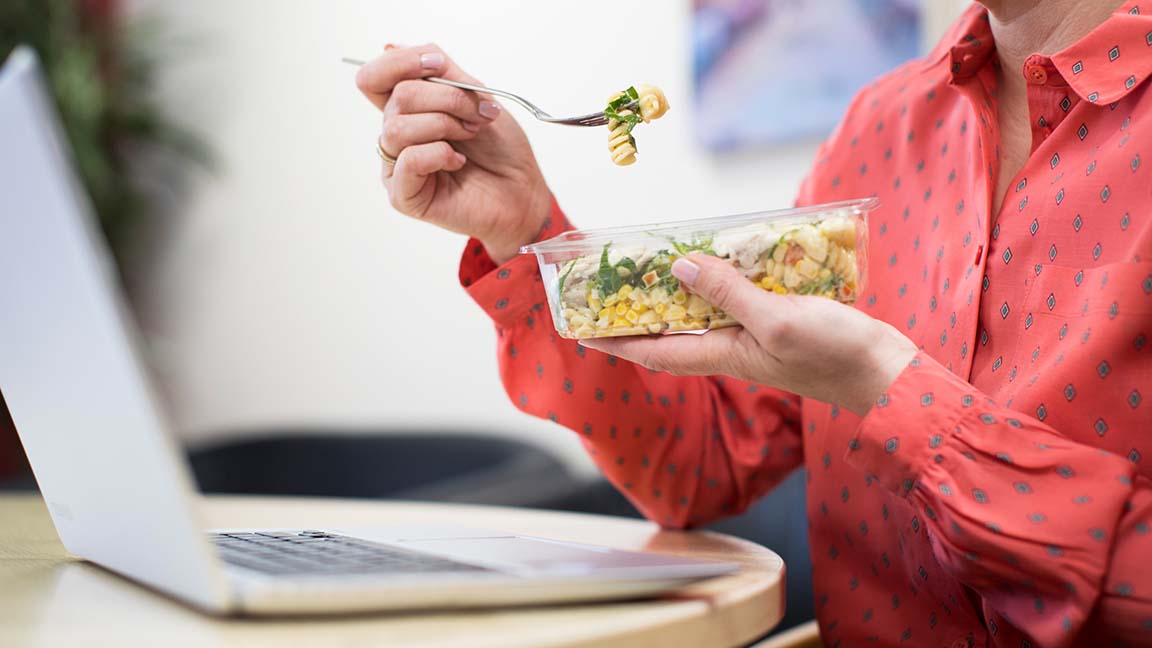The daily demands of work can make it difficult to stick with a healthy diet. .
If the inherent draw of comfort foods isn’t enough, the stress of work can make us crave them even more.
When the body deals with stressors, it becomes depleted in dopamine, a chemical that causes feelings of pleasure and happiness, according to Jamie Kandora, clinical nutrition manager at Tidelands Health.
“Studies have shown that when you consume sugar, your brain releases dopamine,” she says. “So it makes sense that when you’re stressed, you may find yourself drawn to sugary snacks as a means to comfort yourself.”
Luckily, there are many ways to counteract the impulses that prompt us to grab that candy bar to help get through the day.
Meal planning
One of the biggest issues people encounter when making food choices is finding themselves at work without a blueprint for what they’ll be eating that day.
“Planning ahead is extremely important because you won’t wait until you’re hungry to decide what to eat, which can lead to impulse trips to the vending machine or poor choices from the cafeteria,” Kandora says. “The goal is to avoid being tempted by whatever you might find when you’re hungry.”
Meal planning can mean different things to different people. For some people it’s making a bunch of food before the start of the work week, then portioning those meals out. For others it can be as simple as writing down an outline of your meals for the week.
There is no right or wrong way as long as you’re making conscious, premeditated decisions.
Mindful eating
Rushing through lunch is the norm for many workers, but it’s not the healthiest way to eat. That’s why Kandora and other dietitians recommend what’s called “mindful eating,” which encourages people to slow down during their meals so they are more aware of what and how much they’re consuming.
“Try to take an actual lunch break, even if it’s just for 15 minutes, to slow down and take the time to really enjoy the meal,” Kandora says.
Consider putting your fork down between bites, taking sips of water before and after chewing and being more aware of the textures of your food while you chew.
“Oftentimes we eat so fast our brain doesn’t have time to even register that we are full,” Kandora says. “So mindful eating helps us to slow down and recognize these signals.”
Exercise and meditation breaks
The Centers for Disease Control and Prevention recommends taking a break to move around for three to five minutes every half hour. This could consist of taking a lap around the office, doing a few squats or engaging in some stretching.
“Wearing a fitness tracker is usually helpful too,” Kandora says. “That will remind you to move and make you realize how little you’ve moved.”
If you are able to accommodate a standing desk, then switching off between standing and sitting is a great way to make sure you’re not spending too many hours a day in a chair. Additionally, getting your co-workers involved can help, too. The next time you have a meeting, instead of sitting in the office, you might ask to go for a short walk.
Meditation is another strategy that can help relieve tension and aid you in de-stressing.
“Even just deep breathing for a few minutes can help when you’re stressed and stop you from reaching for the sugary snack and going straight to food as a coping mechanism,” Kandora says.
If you’re still worried about your eating habits at work, you should consult with a dietitian or your physician about finding an exercise and a nutrition plan that is right for you.





